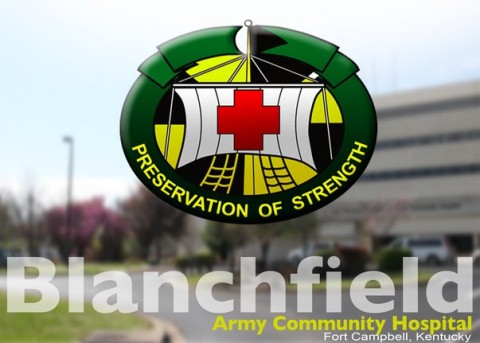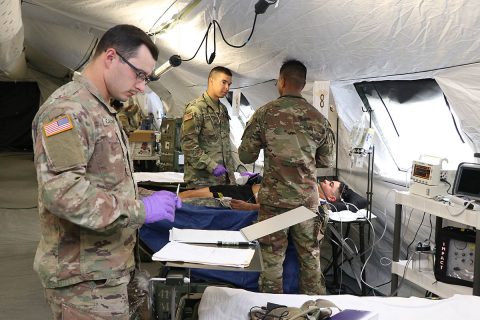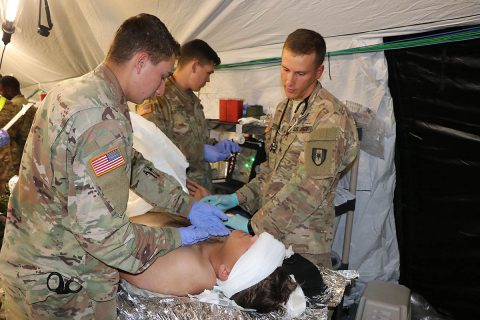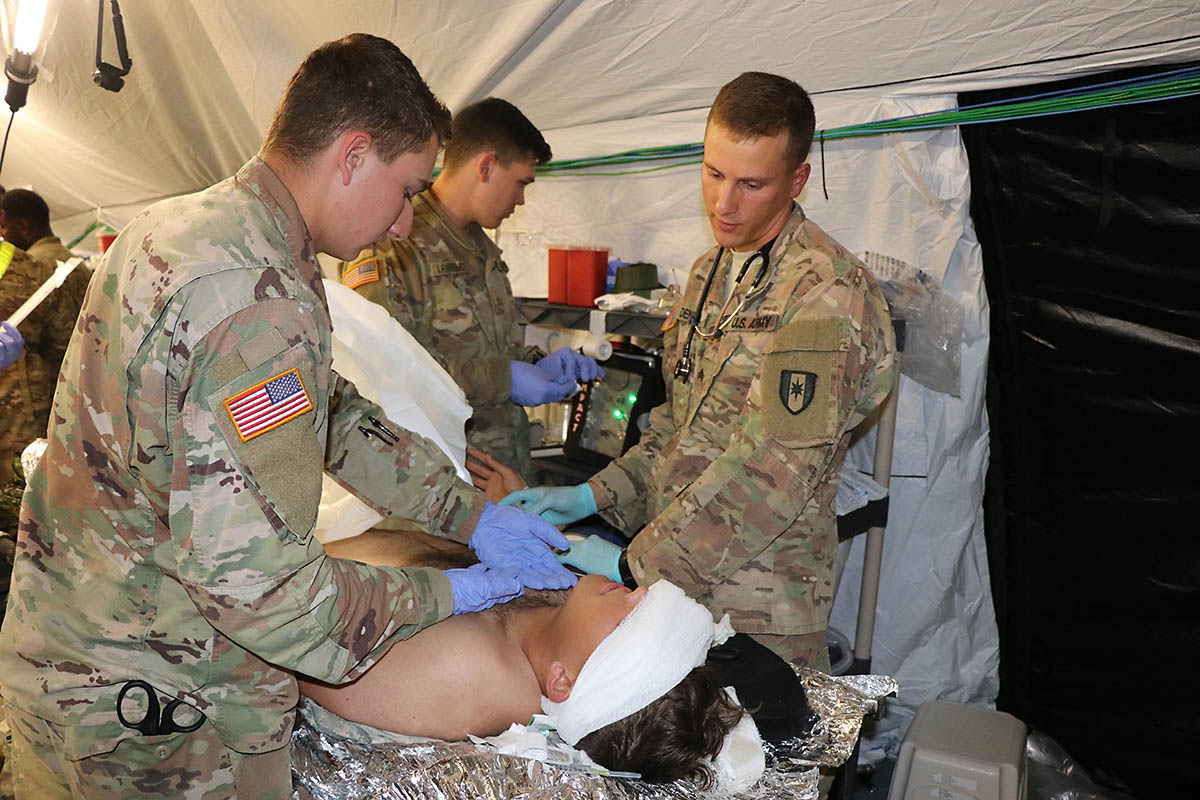Written by Maria Yager
Blanchfield Army Community Hospital Public Affairs
 Fort Campbell, KY – Soldiers from the Fort Campbell – based 531st Hospital Center, seven subordinate units and Blanchfield Army Community Hospital participated in a field exercise recently, allowing them to test Army Medicine’s new field hospital platform.
Fort Campbell, KY – Soldiers from the Fort Campbell – based 531st Hospital Center, seven subordinate units and Blanchfield Army Community Hospital participated in a field exercise recently, allowing them to test Army Medicine’s new field hospital platform.
In 2017, the Army’s combat support hospitals began transitioning to a new, more modular 32-bed field hospital that can be expanded incrementally to 148 beds, with a suite of medical and dental services to choose from. Its design gives medical planners more flexibility in sending only the modules and personnel it needs for the mission.

To date, three of the Army’s combat support hospitals have made the transition including the Fort Campbell-based 531st Hospital Center, formally known as the 86th CSH.
“The 531st is a newly designated hospital center with the mission to serve as the command element for what used to be the headquarters of a combat support hospital,” said Col. Brandon Pretlow, 531st commander.
A field hospital provides line commanders Role III (hospital level) medical support in a theater of operations to help conserve the fighting force. The field hospital is subordinate to the hospital center and provides services ranging from routine sick call and primary care to emergency medical treatment and surgical services. Solders from the newly established 586th Field Hospital fall under the 531st to support the medical mission.
“This is the first opportunity for the 586th Field Hospital to test its manning and mission capability with its new equipment and its new configuration and this is the first time for the 531st Hospital Center command and staff to come out and train on mission command and battle drills.”

The field exercise on Fort Campbell began with an advance detachment learning to set-up the new modular system made up of tents and International Standards of Organization shipping containers. Once established Soldiers participated in ten days of operational training that included integration with the 101st Airborne Division’s 3rd Brigade Combat Team.
“We’ve had some casualty play where we’re doing medical evacuation, or casualty evacuation from the Role I (battalion aid station) within 3rd Brigade Combat Team all the way back to the field hospital for Role III treatment which can prepare a patient for further evacuation or extended care here at the 586th Field Hospital,” said Pretlow.
The realistic training simulated conditions the units could experience in a deployed environment and was a new experience for some of the Soldiers.
“I definitely learned more from the exercise. We learned different techniques that you have to use with the portable x-ray. It’s harder to move around, but the [586th Soldiers] made it look so easy,” said Pfc. Sharene Carey, a student completing her six-month clinical rotation at Blanchfield’s Radiology Specialist Phase 2 training site.
Blanchfield’s radiology students were able to gain experience training in their career field at the 586th’s radiology module, getting exposure to equipment and conditions they may operate under in a deployed environment.
Aside from the battle drills, the exercise involved breaking-out all the new unit’s equipment and modules and presented new learning opportunities as Soldiers assembled their redesigned hospital for the first time.
“For this field exercise what we wanted to do was set up the entire 148 beds to find out exactly what it is we can do and where our short comings are. That’s really what we wanted to get at here and to figure out what we needed to improve upon and what we needed to go back to MEDCOM and to the Army and to ask them to field us so that we can provide the best care to our warfighters,” said Master Sgt. Patrick Walters, 586th senior enlisted advisor.
“It’s a learning opportunity. We’re taking it in a very positive aspect and getting a lot of positive feedback from Soldiers and just identifying new ways of doing things. It is not the old CSH concept. It is something new and we have a lot of work to do to get after it, making sure we are trained in all of our abilities of what we’re doing. So far the exercise has been excellent. We need to do more, but it will come in time,” said Pretlow.
As the command element, the 531st can deploy with two field hospitals and specialty units and augmentees. This training also included Soldiers from the 72nd Veterinary Detachment, 501st Area Support Medical Company, 179th Medical Detachment, 41st Medical Detachment, 212th Combat Stress Control, and 61st Preventive Medicine Detachment.
Assigned to the 44th Medical Brigade, Fort Bragg, North Carolina, the 531st Hospital Center and subordinate units operate from Fort Campbell to support the 101st Airborne Division (Air Assault), unified land operations and defense support of civil authorities.



